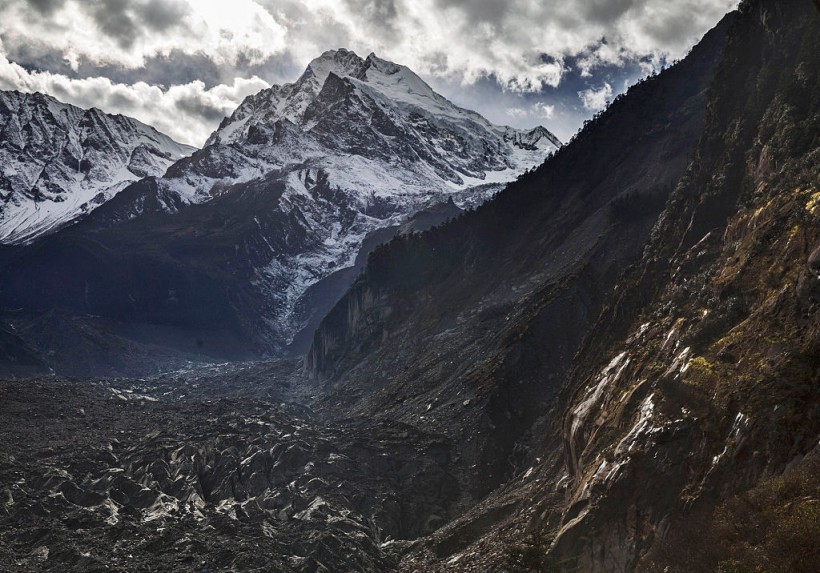(Photo : Photo by Kevin Frayer/Getty Images)
Scientists were stunned to discover more than 900 never-before-seen species of microbes in melting glaciers, of which some could potentially be pathogenic.
It seems like the possibilities of consequences the world may face due to climate change could be endless.
A new analysis of microbes' genomes found inside glaciers on the Tibetan Plateau revealed that it could spark a wave of new pandemics if released, according to LiveScience.
As climate change speeds up melting, these microscopic organisms could escape from their icy prisons.
Researchers from the Chinese Academy of Sciences sampled ice from 21 glaciers on the Tibetan Plateau - known as the Qinghai-Tibet Plateau or the Qing-Zang Plateau or as the Himalayan Plateau in India - also known as the "roof of the world" as it is the highest and largest plateau on Earth, as per China Highlights.
The team's DNA sequencing showed that the microbes locked inside the ice created a massive database of genomes that they named the Tibetan Glacier Genome and Gene (TG2G) catalog - the first time a microbial community hidden within a glacier has been genetically sequenced.
Unexpected Microbial Diversity
The team published their report in the journal Nature Biotechnology, noting that 968 microbial species frozen within the ice composed mostly of bacteria, along with algae, archaea and fungi.
However, they were perhaps surprised to find that around 98% of those species were completely new to science, and that the level of microbial diversity was "unexpected" due to certain challenges inside the glaciers, such as "extreme environmental conditions like low temperatures, high levels of solar radiation, periodic freeze-thaw cycles and nutrient limitation," the authors wrote.
Despite it all, the surfaces of glaciers seem to support a diverse array of life.
Although it is unknown how old exactly some of the microbes were, previous studies show that those may have been trapped in ice for up to 10,000 years.
Also read: Step Pyramid of Djoser: the First Pyramid the Egyptians Ever Built
Climate Change Boosts Potential Outbreak of Dangerous Microbes
The chances of having a new wave of pathogenic illnesses increase as climate change continues to melt glacial ice at a fast rate, mostly composed of bacteria which will "will escape and wreak havoc," researchers said, leading to local epidemics and "even pandemics" if released into the environment.
Moreover, evidence shows that the newfound bacteria could be very dangerous to humans and other organisms, with 27,000 potential virulence factors identified within the TG2G catalog that help bacteria invade and colonize potential hosts.
Researchers warned that around 47% of these virulent factors "have never been seen before," thus the potential harm it may cause and to what extent could not be known, although it is possible these pathogenic bacteria cannot survive for long after breaking out.
Nonetheless, they can still cause problems, according to the researchers, because bacteria have the unique ability to exchange large sections of their DNA, known as mobile genetic elements (MGEs), with other bacteria.
This means even if they do die after escaping the thawed ice, it could pass on their virulence to some other bacteria they encounter.
Related article: South Korea's First Homemade Covid Vaccine Approved for Ages 18 and Above
© 2024 NatureWorldNews.com All rights reserved. Do not reproduce without permission.




![Microplastics Escape Body's Gut to 'Infiltrate' the Brain, Kidneys and Liver [Study]](https://1471793142.rsc.cdn77.org/data/thumbs/full/70195/280/157/50/40/microplastics-escape-bodys-gut-to-infiltrate-the-brain-kidneys-and-liver-study.jpg)

